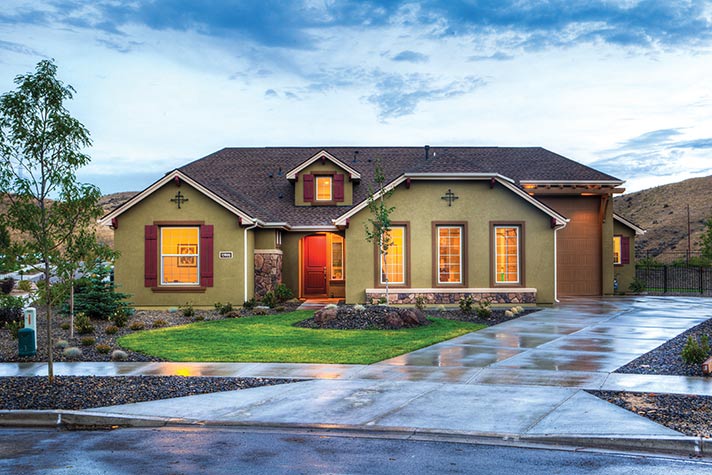On Real Estate & More – December 2019/January 2020
Oregon is making a significant change in what type of housing is allowed to be built in the state. House Bill (HB) 2001 was adopted by the Oregon Legislative Assembly in June 2019 and gained national attention as Oregon is the first state in the nation to ban the century-old practice of reserving land for a single type of residential development. The bill is intended to create denser, greener, and more affordable residential units in the face of chronic housing shortages.
HB 2001 requires cities with populations over 25,000 to allow for middle housing—duplexes, triplexes, quadplexes, cottage clusters, and townhouses—on land zoned for single family homes. The bill requires cities with 10,000-25,000 population to allow for duplexes on single family lots. The bill does not require that any new housing types be built, only that cities allow for it. Cities must update their zoning codes to allow for the new housing types by June 30, 2022 (June 30, 2021 for cities between 10,000 and 25,000 population).
HB 2001 also:
- Prohibits cities from requiring owner-only occupied accessory dwelling units
- Disallows cities from requiring parking for accessory dwelling units
- Requires cities to allow for the collection of impact fees on middle housing at the time of occupancy rather than at the time of permit issuance
- Allows cities to have site development standards (such as setbacks and lot coverage) for middle housing
But what may be a novel land-use practice in most states is more familiar territory in Oregon. Oregon has been a pioneer of policies that seek to push urban development upwards, rather than outwards. Oregon’s sprawl-fighting “urban growth boundary,” (UGB) which separates cities from farms and forest lands, is perhaps the best-known example of the unusually tight grip that state regulators keep on local land use. Every city in Oregon has a UGB, thanks to Senate Bill 100, which was passed in 1973. The boundaries are designed to concentrate growth within established communities so that urban sprawl doesn’t move into farm and forest lands.
To ensure that cities are meeting their populations’ needs, officials regularly assess whether the urban boundaries can accommodate growth for the next 20 years. And cities must follow other rules handed down from state legislators, including a requirement to zone for a variety of housing types.
When it passed in 1973, SB 100 had support from environmentalists and home builders alike. And its principles have held onto their broad appeal: The state’s land-use program has survived three referendum challenges. Although developers have often pushed for expanding the urban boundaries—and they have expanded several times—builders have also found that keeping construction close to existing urban infrastructure lowers their costs and keeps returns high. But the state’s land-use laws weren’t addressing the housing shortages that have challenged Oregon’s cities, particularly their low-income residents. Nor did it address the exclusionary roots of single-family zoning codes, or the patterns of racial segregation that persist as a result.
Advocates believe the legislation will help address these issues. Opponents of the bill are concerned it will not create the housing opportunities it claims to and that it takes power and control away from local communities in favor of real estate developers. Concern was also expressed that development with so few restrictions would reduce home values and put undue strain on infrastructure and public services.
While the bill may not solve Oregon’s affordable housing woes, it is a bold effort that will definitely be watched with interest by many around the nation.

 Sandy J. Brown lives in Jacksonville and is a real estate broker and land use planner with Windermere Van Vleet Jacksonville. She can be reached at sandyjbrown@windermere.com or 831-588-8204.
Sandy J. Brown lives in Jacksonville and is a real estate broker and land use planner with Windermere Van Vleet Jacksonville. She can be reached at sandyjbrown@windermere.com or 831-588-8204.